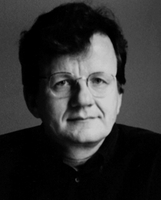Valdis Krebs is the Founder, and Chief Scientist, at orgnet.com. Valdis is a management consultant, researcher, trainer, author, and the developer of InFlow software for social and organizational network analysis. Valdis is also part of the North American Thrivable Network.
Todd Hoskins: What is social network analysis?
Valdis Krebs: Social network analysis [SNA] is the mapping and measuring of relationships and flows between people, groups, organizations, computers, URLs, and other connected information/knowledge entities. The nodes in the network are the people and groups while the links show relationships or flows between the nodes. SNA provides both a visual and a mathematical analysis of human relationships and forms a basis for improving the relationships and connections in the social group.
Todd: How does understanding the network relationships contribute to thrivability?
Valdis: Some network patterns support a thrivable outcome and others constrain it. A network map shows you an “as is” picture of where you are at. You know your goal is thrivability and the network map says “OK, you are here now.” The community leaders, coaches, or weavers then have to figure out how to get “from here to thrivability.”
Creating or building the network for thrivability is not following a blueprint and building a house. It is more like getting in shape for a marathon, or for rock climbing – you get the system ready for maximal performance in the space you are in. You get ready, but there are no guarantees of success. You can be in great shape and still run a bad race today. But, you probably beat all of those who are in bad shape and ran a bad race today!
Todd: What structures or prescriptive approaches have you seen that promote a thriving network?
Valdis: The structures that maximize emergence, learning, agility and adaptability. Those structures that prepare you for the unknown — after all we can NOT predict the future, but we can partially influence it and be ready for it.
One big item is each person’s network awareness — do you know what is happening around you? Who is involved and how they feel about and contribute to what is going on around you and them? Do you know who needs help? Who has the answers? Who needs to be connected or introduced? We can only keep so many relationships in our heads and in our software — how do you best utilize that limited number for yourself and others?
Network awareness depends not just on your connections, but also your connection’s connections. How do you create a close, comfortable network and still have it wide and reaching, so that you can be aware of non-local events and knowledge?
Todd: You have written that we need to build creative combinations of similarity and difference in order to foster interdependence? How does a network not become homogeneous?
Valdis: Yes, birds of a feather flock together! And if we do not pay attention, and just let things go naturally, we will build highly homophilous networks. It is easy to build a network of similarity. It is more difficult, but much more useful (for ourselves and others), to build a network that utilizes both similarity and difference and thrives on the interplay.
We don’t want too much of either – similarities or differences – we want a nice combination. Enough similarities that we feel comfortable and can communicate with each other, but also enough differences that we can innovate and turn each other on to something new and different.
Todd: So, it requires intention?
Valdis: Yes, intention and attention! Know what you want to do and be aware of what has been done around you. We are always self-organizing, and so are others around us. With a group of similar intention we will build a thriving network to support that intention.
Todd: Speaking of building groups of similar intention, are leadership structures changing? What is emerging?
Valdis: Yes, leadership is often emergent in networks, and also different depending on need. Most people don’t think of networks as having leaders — they think everyone is equal in networks. That is not true. Some people always have better connections than others in some situations. Person A may lead in situation 1, but person B takes over in situations 2 and 3, and then in situation 4, a third leader emerges. It is usually not one leader all the way through as it is in most hierarchies.
A thrivable community recognizes expert and situational leadership and allows and encourages it to happen. Even co-leaders are fine. Whatever implements the intention.
Todd: If recognizing the power of networks is a valuable lens through which to look at our communities, groups, and organizations, how can we all become better network thinkers?
Valdis: First step is to recognize that you are embedded in multiple networks: work, family, friends, hobby, sports, religion, neighborhood, etc.
Second step is to “Connect on your similarities and benefit from your differences.” Think of the introductions you can make to benefit those around you, including yourself.
Third, is practice simple network weaving. You do this around triangles — social triangles. A knows B and C knows B. B realizes that A and C could benefit from knowing each other and makes the introduction. This is called “closing the triangle” — all three people, A, B, and C now know each other. Look for opportunities to close triangles around yourself. Don’t introduce everyone to everyone else — just make those introductions that have a plausible positive outcome for the community. At the same time you are closing existing triangles, open up new ones by making connections outside of your immediate circle of friends and colleagues. This will open the network to diversity and possibility as new people with new ideas and knowledge now interact within your community. Anyone can close and open triangles — they do not need anyone’s permission. This is grass-roots, bottom-up network building.
